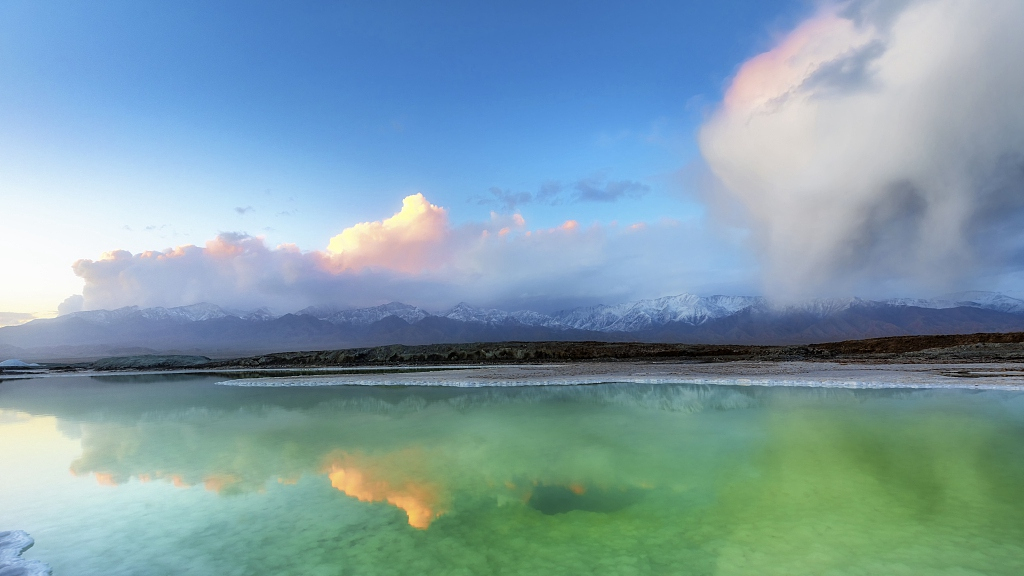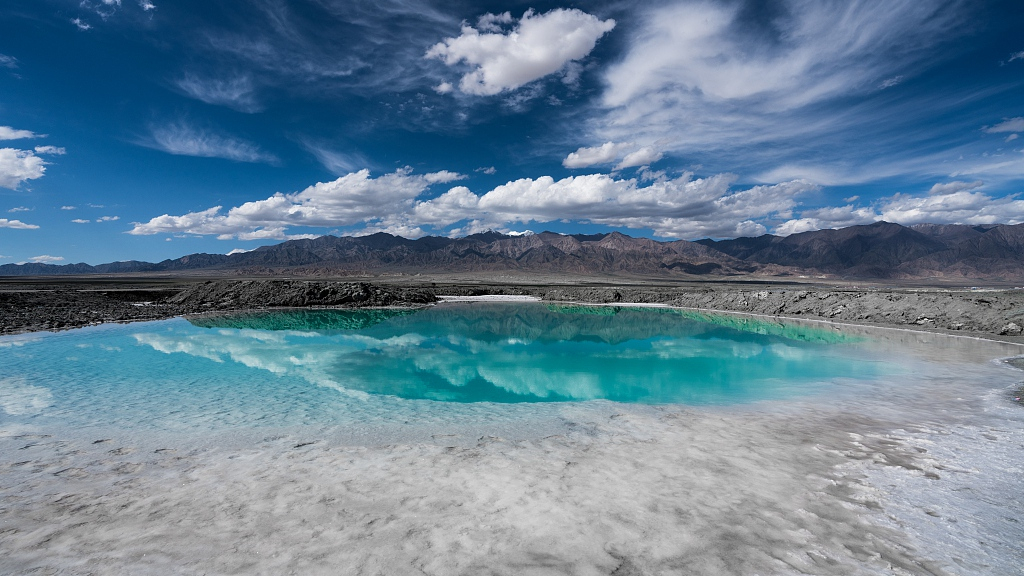
Earth
11:42, 31-May-2019
Jewel in NW China: the Emerald Lake
CGTN

Located in Haixi Mongol and Tibetan Autonomous Prefecture, Qinghai Province in northwest China, there is a lake which has beautiful emerald colored water. Looking from an aerial view, it is like a delicate jewel inlay in the broad ground.
The Emerald Lake is a salt lake locates at an altitude of 3,000 meters on the plateau. It covers six square kilometers in total, and famous for its marvelous emerald color of water which is the reason why it is named for.

An aerial view of the Emerald Lake. /VCG Photo
An aerial view of the Emerald Lake. /VCG Photo

Emerald Lake in twilight. /VCG Photo
Emerald Lake in twilight. /VCG Photo

The crystal of salt in the lake. /VCG Photo
The crystal of salt in the lake. /VCG Photo

Emerald Lake in twilight. /VCG Photo
Emerald Lake in twilight. /VCG Photo

The marvelous emerald colored water against the blue sky and white clouds. /VCG Photo
The marvelous emerald colored water against the blue sky and white clouds. /VCG Photo
This lake used to be a mining area. After years of mining, the water mixed up with a high concentration of salt and became brine. Different minerals alongside with the crystal of salt reflect the light, making up this miracle.
China is a country which is rich in salt lakes. The four main areas of salt lake distributions are the Xinjiang Uygur Autonomous Region, Qinghai Province, Tibet Autonomous Region and Inner Mongolia Autonomous Region.
(Cover image via VCG)
(If you want to contribute and have specific expertise, please contact us at nature@cgtn.com)

SITEMAP
Copyright © 2018 CGTN. Beijing ICP prepared NO.16065310-3
Copyright © 2018 CGTN. Beijing ICP prepared NO.16065310-3